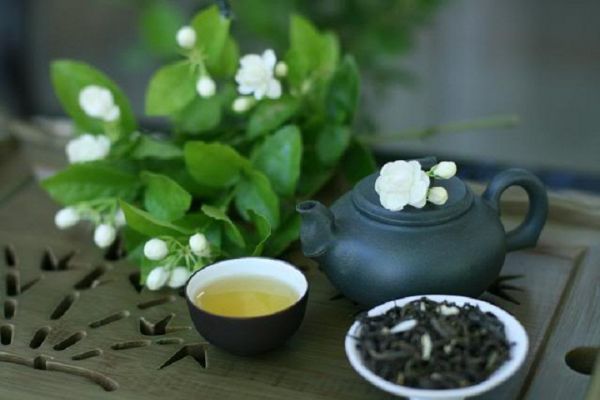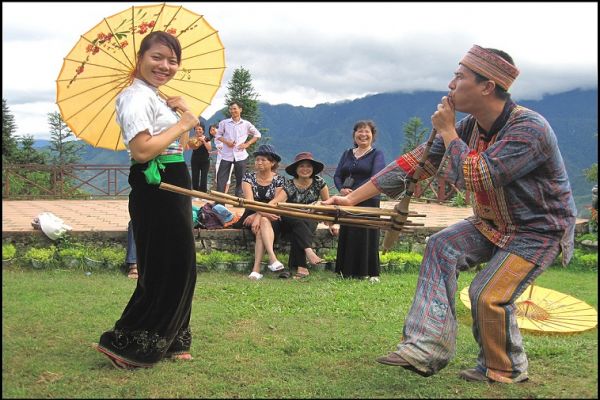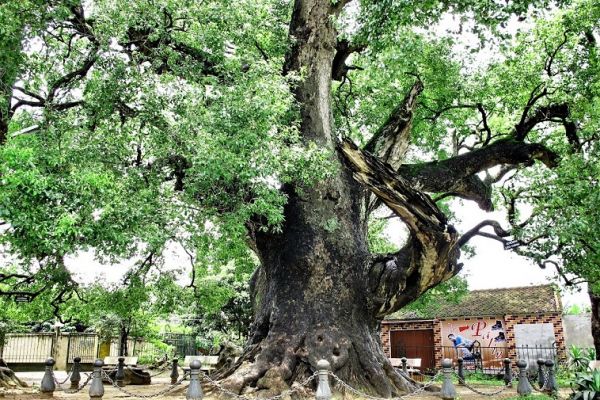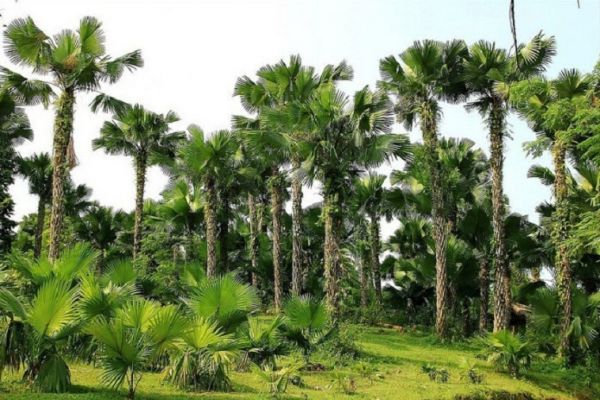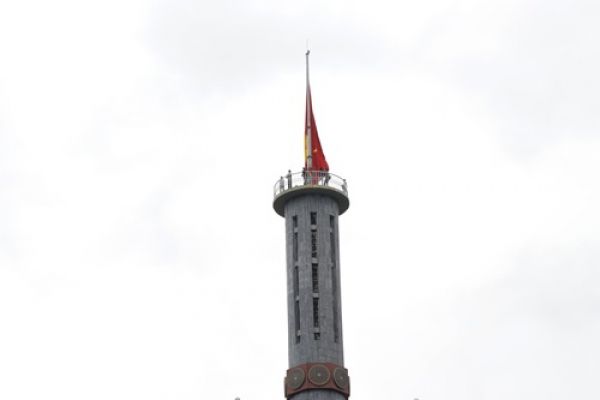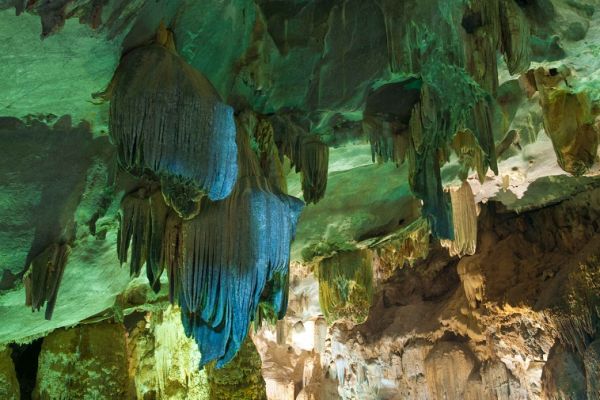Engagement
An engagement ceremony usually takes place half a year or so before the wedding. In the past, most marriages were arranged by the parents or extended family, and while children were sometimes consulted, it was nearly always the parents' final decision. It was not unusual for the bride and groom to meet for the first time at the day of their engagement. However, in the last few decades, Vietnamese women and men marry based on love and decide on their happiness rather than arranged marriages.

Engagement ceremony
The wedding
Preparations for the traditional Vietnamese wedding first begins by choosing a date and time for the marriage ceremony. This is decided by a Buddhist monk, Spiritual leader, or fortune teller due to the spiritual nature of the occasion. This tradition may change if the family is Catholic.
The wedding consists of an extensive set of ceremonies: asking permission to receive the bride, receiving the bride at her house, and bringing the bride to the groom's house. Both Vietnamese and oversea-Vietnamese who desire to have a hybrid traditional Vietnamese and Western-style wedding will often incorporate the last two ceremonies with the Western-style wedding.
At the end of the ceremonies, there is a wedding reception for the two families and guests.

Wedding party
Actually, this now obsolete ceremony was used in the past to confirm-last minutes-that the marriage would still take place. Due to often forced arranged marriages, some brides fled from home. Thus, this ceremony was more so used t confirm that the wedding would proceed. You must ask permission or else you won’t be able to marry. If you ask you will be welcomed with kind comfort, and a chance to receive your bride.
Receiving the bride at her house
On the day of the wedding, the procession of the groom's family is led in specific order. The first person would be the representative of the groom's house followed by the groom's father, the groom, then the rest of his family and close friends
Upon arriving at the bride's home, the procession lights fireworks to alert the bride's family, who then lights its own round of firecrackers to welcome the groom's procession. Members of the procession are introduced to the bride's family, and the bride's family introduces its members to the procession. The groom presents his gifts to the bride's family, and he is given permission to greet the bride, who is finally brought out.
The permission ceremony begins in front of the bride's ancestor altar. The bride and groom burn incense sticks, asking for permission from the ancestors to bless them. The couple turns and bows to their parents, gives thanks for raising and protecting them. The bride and groom then bow to each other.
A formal tea and candle ceremony along with speeches follow. While tea has always been an essential part of Vietnamese life, Vietnamese tea culture is not as complex or ritually rigid as its counterparts in China, Japan or Korea. A traditional wedding may be the only time in a Vietnamese person's life that a formal tea ceremony is essential.
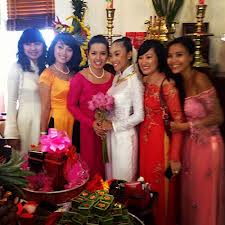
Bride and her friends
The bride and groom, in front of all their guests, will serve tea (or wine) to their parents. Each parent will then give advice about marriage and family to the couple. A candle ceremony will follow, symbolizing the joining of the bride and groom and the joining of the two families. The groom's gift boxes filled with jewelry will be opened by the groom's mother, who will then put each piece on the bride for good fortune.
Due to Western influence in the concept of wedding rings, modern weddings still include the giving of jewelry to the bride but are followed by the exchange of wedding bands between the bride and groom. However, Catholic Vietnamese families reserve the exchange of wedding bands for the separate church ceremony.
Traditional Vietnamese wedding gifts
Guests are expected to bring gifts, and it is traditionally in the form of money in an envelope. Immediate family, usually gives more money to the bride and groom. At one point during the reception, the bride and groom will go from table-to-table to thank guests for their blessings and sometimes collect the envelopes. Most couples however leave a box at the sign-in table for guests to drop in their envelopes and cards, although this is frowned upon by older traditional conservatives. Occasionally, the family and guests' monetary gifts will cover more than the cost of the wedding and reception.
The bride's change of dress
In modern weddings, brides usually change into three different gowns during the reception. Her dresses are usually composed of the Western white wedding gown, a second Western dress to be worn at the end of the evening during the dancing, and a third traditional “Aodai” to be worn during the traditional table visits to personally thank the guests for coming.
If you have a chance to go to Vietnam, spend your time to attend a wedding ceremony and you will see the characterized cultural beauty by Vietnamese people.

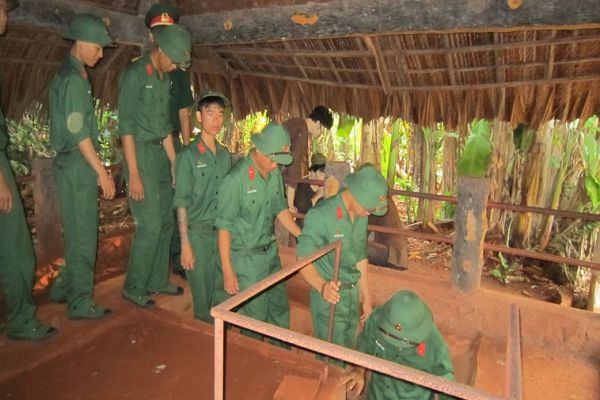
.jpg)





